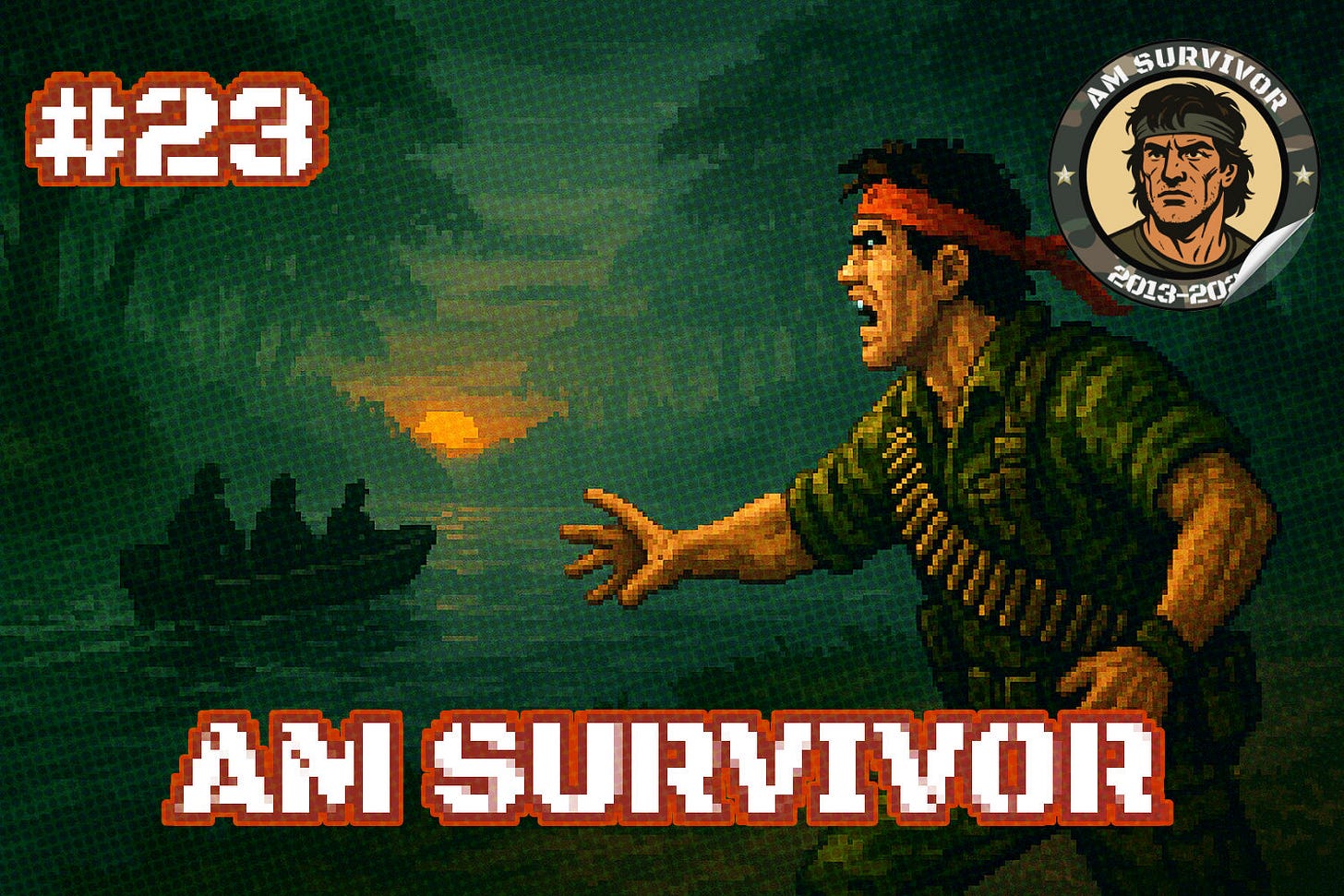When a business reaches the end of its life
AM Survivor #23
When the 3D printing industry was experiencing its great moments of glory, it seemed that the boom would last forever - or at least for another decade or two. Just five to ten years ago, it was enough to announce that your company operated in the AM sector, and the doors to financing would open wider than for anyone else.
Of course, that ended quite abruptly - and it won’t return anytime soon. The companies that managed to survive the collapse that occurred between 2024 and 2025 are those built on solid business fundamentals. These are companies whose products and solutions are needed regardless of the investment climate, market trends, or hype cycles.
However, there are also other kinds of cases - those where a given solution simply runs its course. It stops being necessary.
One particularly interesting example is the story of the Israeli startup Castor, which shows that sometimes even a great idea can quickly lose its value and vitality - especially when the hype surrounding a technology begins to fade.
Castor Technologies was founded in 2017 in Tel Aviv with the mission of helping companies make better decisions about how to use 3D printing. The company offered a tool for analyzing parts and recommending how they should be manufactured.
Its software could process CAD files, identify parts that would be more cost-effective to produce using additive manufacturing, and compare costs and lead times with traditional production methods.
Castor’s business model was simple yet innovative. At a time when manufacturers were only beginning to understand the potential of AM technology, a tool capable of automatically analyzing thousands of parts at once seemed invaluable.
The software could also suggest design modifications that would lower printing costs or shorten production time. It was an important step toward integrating 3D printing into everyday industrial processes. Castor filled a crucial gap between the world of engineering and business. Among its clients were Siemens Energy, Stanley Black & Decker, and Evonik.
Castor gained recognition and investor interest. In 2021, Xerox led a $3.5 million funding round that also included Evonik Venture Capital, TAU Ventures, Spring Ventures, and private investor Jeremy Coller. Two years later, the Japanese chemical giant Asahi Kasei announced a strategic partnership with the company, integrating its software with its own CAE engineering tools.
In total, Castor raised around $5.9 million and employed nearly thirty specialists.
Unfortunately, when the 3D printing market began to slow down in 2023 and large industrial corporations cut their R&D budgets, the resulting downturn rippled through the entire supply chain - including AM-supporting software.
Castor, dependent on large corporate clients and venture capital funding, found itself in a difficult position. As more and more companies suspended implementation projects, demand for its services plummeted.
In July 2025, Castor filed for court-ordered liquidation in the Tel Aviv District Court.
Documents showed that the company had accumulated about 8.6 million shekels in debt (around $2.3 million) and that further financing was impossible.
This week, Omer Blaier, the company’s founder, officially closed the project in a farewell post on LinkedIn. He reflected on how the market had become unstable and how the overall condition of the AM industry had deteriorated significantly.
But I see it a little differently.
Yes, the AM market today is completely different from what it was in 2021, when Castor was raising investment rounds. But 3D printer users are also different now.
I’ve been observing this since 2013 - back when the term “3D printer” sounded like something out of a Mars expedition. Over time, people’s awareness of how to use 3D printing in their work has grown immensely, and systems designed to tell us what and how to print are no longer as critical as they once were.
Don’t get me wrong - such tools are still useful to have on hand. But they don’t necessarily need to be paid, and certainly not expensive (I assume Castor’s services weren’t particularly cheap).
It’s quite possible that the growing awareness of users simply exhausted Castor’s business potential. And this isn’t the first time something like this has happened in the history of 3D printing.
Another fascinating example is Zcorporation - the legendary manufacturer of full-color gypsum-based 3D printers.
In the 2000s, their solutions allowed for ultra-fast and relatively inexpensive (for the time) production of 3D models - and in full color!
However, with the emergence of affordable desktop FFF 3D printers and increasingly cheaper SLA and DLP resin printers, the market shifted its priorities.
3D printing costs dropped, speed improved, and color stopped being important. Customers wanted functional parts, not flashy demo models.
ZCorp’s technology simply lost its purpose.
Fortunately for its owners, 3D Systems acquired the company in 2011. Yet, within the next five or six years, the technology all but disappeared from relevance and today remains only a niche curiosity.
In Castor’s case, the story is similar - though it concerns software, not machines. As 3D printing became more widespread, CAD and ERP tools began integrating manufacturing analysis functions directly. The niche in which Castor operated began to shrink.
Companies no longer needed separate decision-support systems - many of those capabilities were now built directly into design software.
Paradoxically, the success of the AM industry - its maturity and standardization - made Castor’s tool unnecessary.
When we look at the AM industry today, we can see that the wave of enthusiasm has given way to pragmatism. Only critical solutions matter now.






